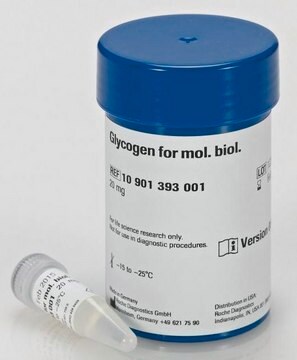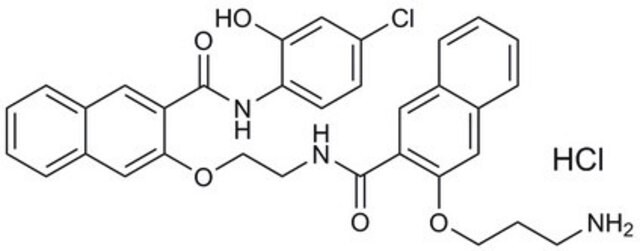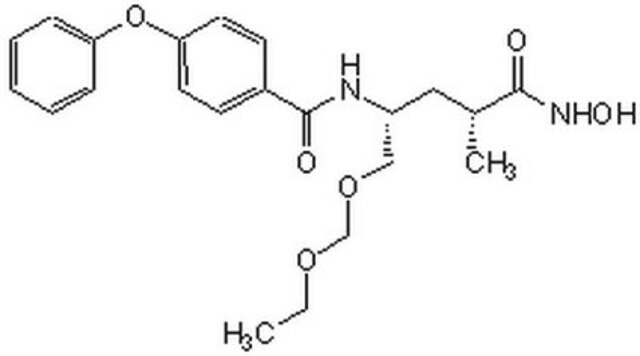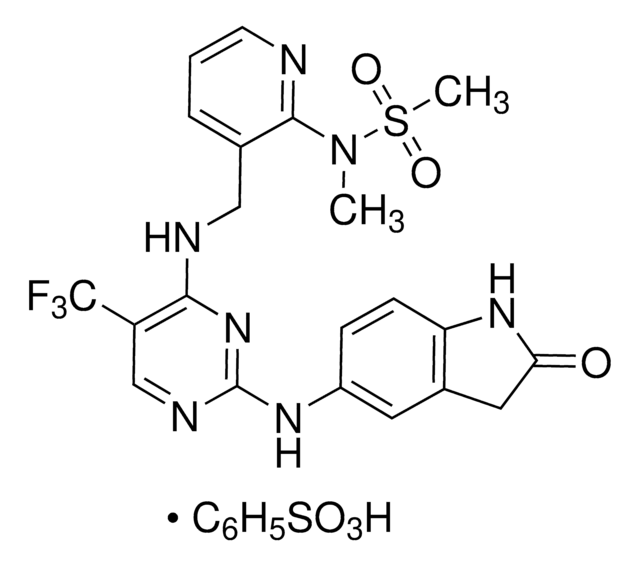Kluczowe dokumenty
SML2453
GSK-A1
≥98% (HPLC)
Synonim(y):
5-(2-Amino-1-(4-morpholinophenyl)-1H-benzimidazol-6-yl)-N-(2-fluorophenyl)-2-methoxypyridine-3-sulfonamide, 5-(2-Amino-1-(4-morpholinophenyl)-1H-benzo[d]imidazol-6-yl)-N-(2-fluorophenyl)-2-methoxypyridine-3-sulfonamide, 5-[2-Amino-1-[4-(4-morpholinyl)phenyl]-1H-benzimidazol-6-yl]-N-(2-fluorophenyl)-2-methoxy-3-pyridinesulfonamide, Compound A1, PI4KA Inhibitor A1
About This Item
Polecane produkty
Próba
≥98% (HPLC)
Formularz
powder
kolor
white to beige
rozpuszczalność
DMSO: 2 mg/mL, clear
temp. przechowywania
−20°C
ciąg SMILES
O=S(C1=CC(C2=CC=C3C(N(C4=CC=C(N5CCOCC5)C=C4)C(N)=N3)=C2)=CN=C1OC)(NC6=CC=CC=C6F)=O
Działania biochem./fizjol.
Kod klasy składowania
11 - Combustible Solids
Klasa zagrożenia wodnego (WGK)
WGK 3
Temperatura zapłonu (°F)
Not applicable
Temperatura zapłonu (°C)
Not applicable
Wybierz jedną z najnowszych wersji:
Certyfikaty analizy (CoA)
Przepraszamy, ale COA dla tego produktu nie jest aktualnie dostępny online.
Proszę o kontakt, jeśli potrzebna jest pomoc Obsługa Klienta
Masz już ten produkt?
Dokumenty związane z niedawno zakupionymi produktami zostały zamieszczone w Bibliotece dokumentów.
Nasz zespół naukowców ma doświadczenie we wszystkich obszarach badań, w tym w naukach przyrodniczych, materiałoznawstwie, syntezie chemicznej, chromatografii, analityce i wielu innych dziedzinach.
Skontaktuj się z zespołem ds. pomocy technicznej








